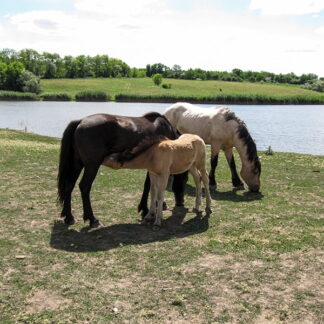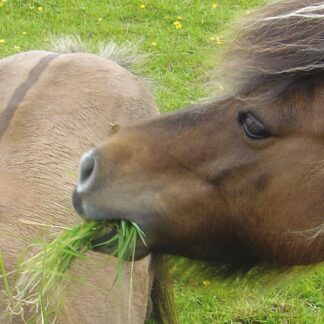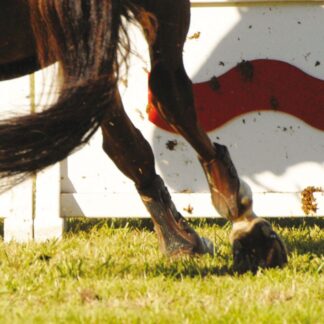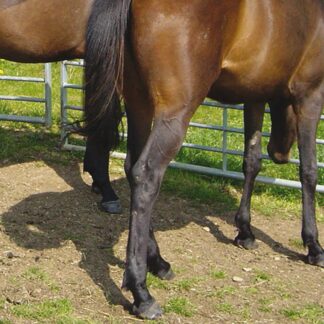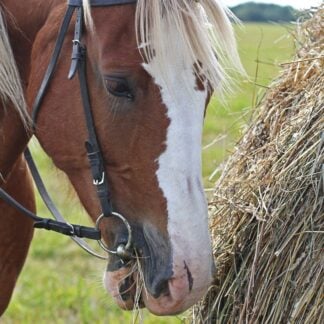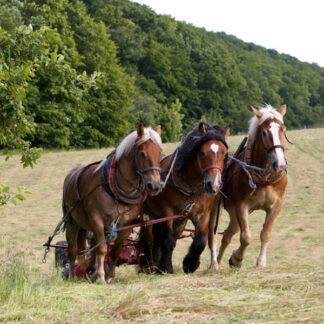There are many different users for equine pasture. It can be used as a food source for your animals, an exercise area and a secure and safe environment for horses to interact with one another. This is why managing your pasture is of vital importance to your horse’s health and well-being.
If you are not investing your time and money into your equine pasture then you can be causing serious if not fatal harm to your horses.
Horses are naturally selective grazers. They will usually refuse to graze on an area of land that they find unpalatable and instead prefer to overgraze in a more tasty area. This will cause the area to become poached and unwanted weeds will start to invade.
Managing Your Pasture
Harrowing
Harrowing is commonly used to spread droppings across the pasture, this will act as a natural fertiliser. However, the team here at Lawn Seeds would not advise using this method for horse and ponies. This is because it can make the pasture unpalatable and any parasites can be easily spread across the whole pasture.
We would, however, recommend harrowing to remove the dead grass and weeds around the ground level.
Rolling
Rolling when the ground has dried out will restore uneven and poached areas of land. However be very careful and avoid the use of heavy clay soils. This will cause compaction and will have a negative effect on the drainage and grass growth.
Poisonous Plants and Weeds
If you are not managing your pasture correctly or you haven’t been looking after it correctly you may see an increase in unwanted poisonous plants and weeds. Below is a short list of some of the plants and weeds you need to look out for:
- Ragwort
- Docks
- Acorns
- Nettles
- Foxglove
- Buttercups
- Privet
- Brambles
Managing Your Pasture Throughout the Seasons
Spring
- Harrow to remove any dead vegetation, weeds and to help aerate the soil
- Reseed any bare patches by using Lawn Seeds mixtures.
- Roll the pasture to repair any damage that has been inflicted by the winter weather
- If you are using this pasture to grow hay we would advise you to remove any livestock
- Remove any weeds and poisonous plants
- Apply fertiliser to encourage growth
Summer
- Continue to remove weeds and any poisonous plants
- Top up the pasture (be careful not to top ragwort) to a height of 5cm. This will help to better withstand wear from hooves.
- Cut a bale the hay
Autumn
- Look out for any fallen acorns and sycamore seeds, these can be deadly to horses so we would advise you picking these up or keep your horses clear
- Making sure not to top ragwort, top up your pasture
Winter
- When possible rotate pastures to help prevent severe winter damage
- Pick up any droppings to help encourage grazing the whole pasture and to reduce any unwanted parasites
- When winter has finally come to an end test the soil to help identify any nutrients that are lacking and talk to the team here at Lawn Seeds so we can advise you on the best fertiliser to apply
-

Grazing Dry Soils
£92.00 Per Acre pack Add to basket -

Grazing Boost
£37.00 Per KG Add to basket -

Laminitis Mix
£99.00 Per Acre pack Add to basket -

Riding Areas
£125.00 Per Acre pack Add to basket -

Muddy Gateways Seed Mix
£49.50 – £73.00 Per Pack Select options -

Hay & Haylage
£81.00 Per Acre pack Add to basket -

Horse & Pony Paddock
£78.00 Per Acre pack Add to basket -

Long Term Cutting & Grazing
£89.00 Per Acre pack Add to basket


